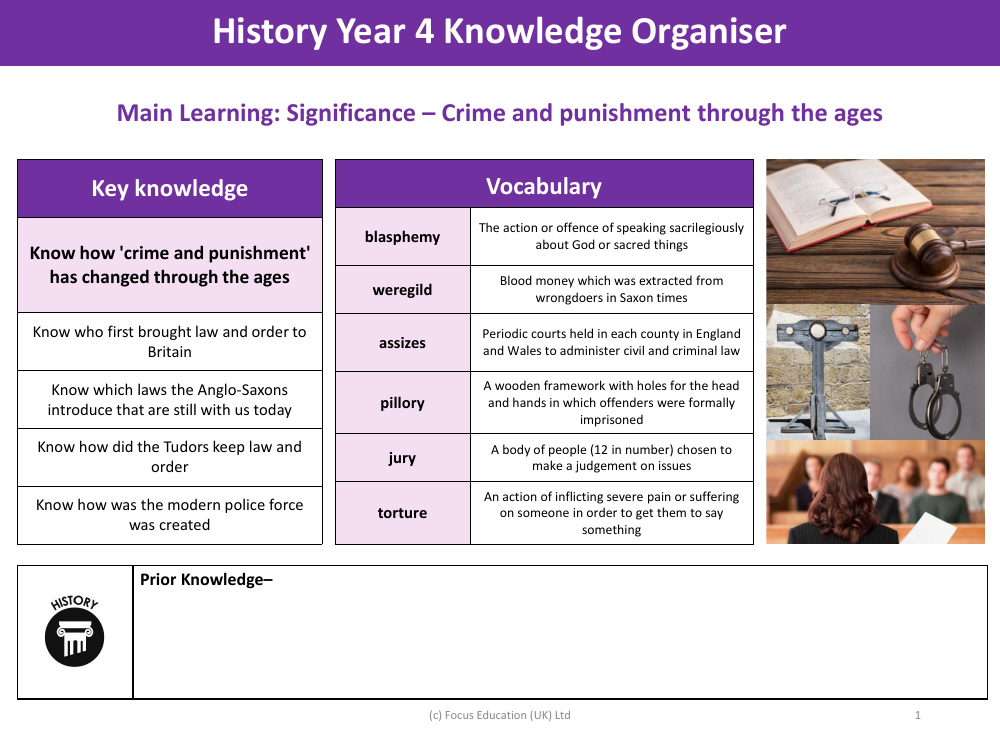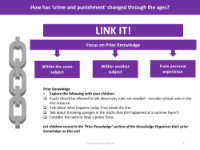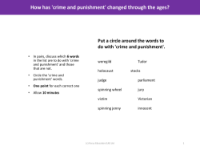Knowledge organiser - Crime and Punishment - Year 4

History Resource Description
In Year 4 History, students are introduced to the significant theme of 'Crime and Punishment' through the ages. The vocabulary section of the knowledge organiser includes terms such as 'blasphemy', which refers to the act of speaking disrespectfully about God or sacred things, and 'weregild', a term from Saxon times denoting a form of blood money paid by offenders. 'Assizes' were periodic courts in England and Wales tasked with administering civil and criminal law, while a 'pillory' was a wooden device used to publicly humiliate offenders by imprisoning their head and hands. The 'jury', typically composed of 12 individuals, is highlighted as a group responsible for delivering judgements on legal matters. Additionally, 'torture' is defined as the deliberate infliction of severe pain or suffering to extract information or a confession.
The key knowledge section encourages students to understand the evolution of 'crime and punishment' over time and to recognise the historical figures who introduced law and order to Britain. It also prompts exploration of the enduring laws established by the Anglo-Saxons and how the Tudors maintained law and order. A pivotal point for students to learn is the creation of the modern police force. The main learning focus is on the significance of how crime and punishment have been viewed and dealt with throughout different historical periods. This knowledge organiser sets the stage for Year 4 students to delve into the history of British law enforcement and its development, providing a foundation for understanding the legal system's past and its influence on the present.











